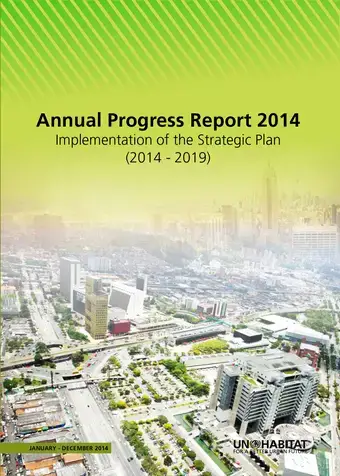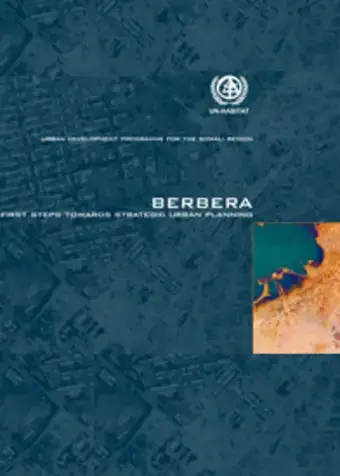 UN-Habitat, the United Nations city agency, has been engaged with the Arab States region for over 30 years and over this period, UN-Habitat has expanded its operation to more than 10 countries in the region.
UN-Habitat, the United Nations city agency, has been engaged with the Arab States region for over 30 years and over this period, UN-Habitat has expanded its operation to more than 10 countries in the region.
This brochure presents an overview of UN-Habitat's engagement in the region, reflecting in what was achieved, how it was achieved, how it was made possible, and what lies ahead especially in these times of change.

 Despite their frequent lack of capacity, water operators are the key actors in the management of urban water and sewerage services. Mentor water operators with relevant skills and experience, and mentee water operators that express a demand for assistance to improve their operations, have complementary motivations for taking part in non-commercial partnerships.
Despite their frequent lack of capacity, water operators are the key actors in the management of urban water and sewerage services. Mentor water operators with relevant skills and experience, and mentee water operators that express a demand for assistance to improve their operations, have complementary motivations for taking part in non-commercial partnerships. UN-Habitat has worked in many African countries for the past 36 years, and this growing portfolio is one of the most important for the agency.
UN-Habitat has worked in many African countries for the past 36 years, and this growing portfolio is one of the most important for the agency. UN-Habitat, the United Nations city agency, has been engaged with the Arab States region for over 30 years and over this period, UN-Habitat has expanded its operation to more than 10 countries in the region.
UN-Habitat, the United Nations city agency, has been engaged with the Arab States region for over 30 years and over this period, UN-Habitat has expanded its operation to more than 10 countries in the region. The dynamic and populous Asia-Pacific region is home to 3.7 billion people and represents 56 per cent of the world’s population. Comprising of 58 countries that stretch from Iran in the west to the Pacific Islands in the east, the region is perhaps also the most diverse in terms of economy, society, culture, environment and human settlements.
The dynamic and populous Asia-Pacific region is home to 3.7 billion people and represents 56 per cent of the world’s population. Comprising of 58 countries that stretch from Iran in the west to the Pacific Islands in the east, the region is perhaps also the most diverse in terms of economy, society, culture, environment and human settlements. Latin America and the Caribbean is the most urbanised region in the world with 80 per cent of its population living in towns and cities. Today, the cities of Latin America and the Caribbean are at a crossroads: after decades in which central and local governments seemed unable to manage this rapid urbanisation, they now have the potential to achieve sustainable urban development in the years and decades to come.
Latin America and the Caribbean is the most urbanised region in the world with 80 per cent of its population living in towns and cities. Today, the cities of Latin America and the Caribbean are at a crossroads: after decades in which central and local governments seemed unable to manage this rapid urbanisation, they now have the potential to achieve sustainable urban development in the years and decades to come. UN-Habitat's vision of urbanization encompasses all levels of human settlements, including small rural communities, villages, market towns, intermediate cities and large cities and metropolises, i.e. wherever a stable community is continuously located and there are housing units together with permanent social and economic activities, common public space, urban basic services and local governance structure.
UN-Habitat's vision of urbanization encompasses all levels of human settlements, including small rural communities, villages, market towns, intermediate cities and large cities and metropolises, i.e. wherever a stable community is continuously located and there are housing units together with permanent social and economic activities, common public space, urban basic services and local governance structure. UN-Habitat has carried out, through affordable geographic information systems, an estimation of the public space allocated to the street in different cities of the world to focus attention to the need for better spatial planning that gives due attention to streets and public spaces.
UN-Habitat has carried out, through affordable geographic information systems, an estimation of the public space allocated to the street in different cities of the world to focus attention to the need for better spatial planning that gives due attention to streets and public spaces.